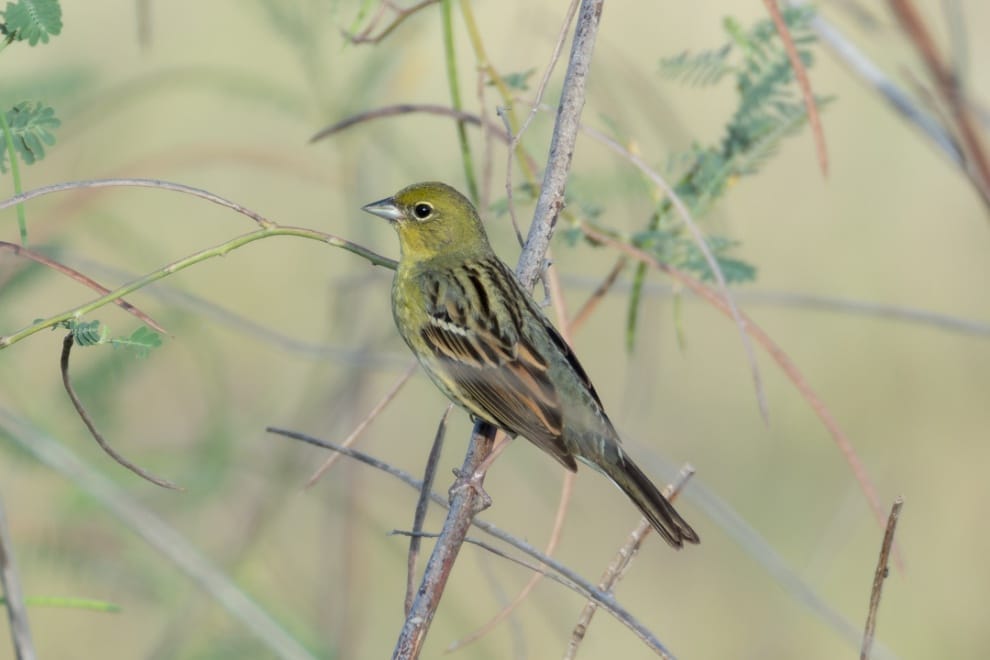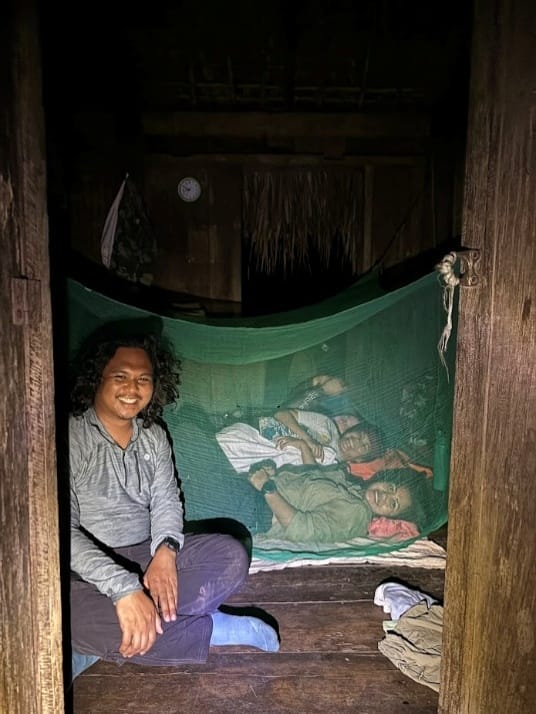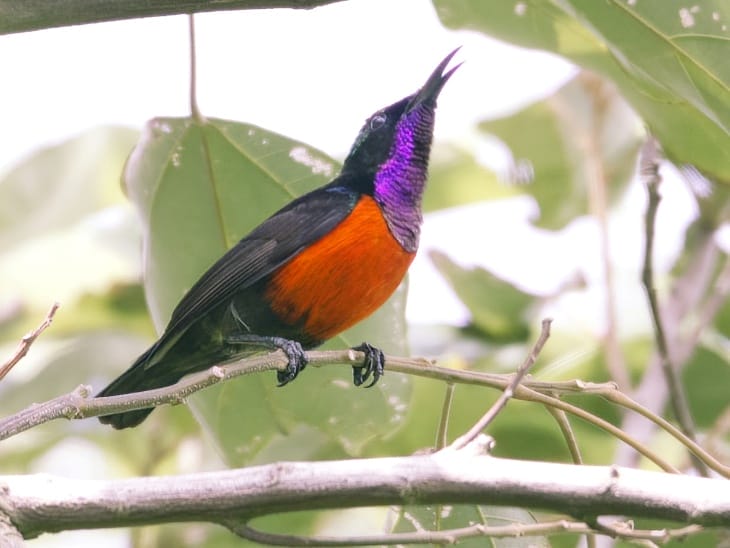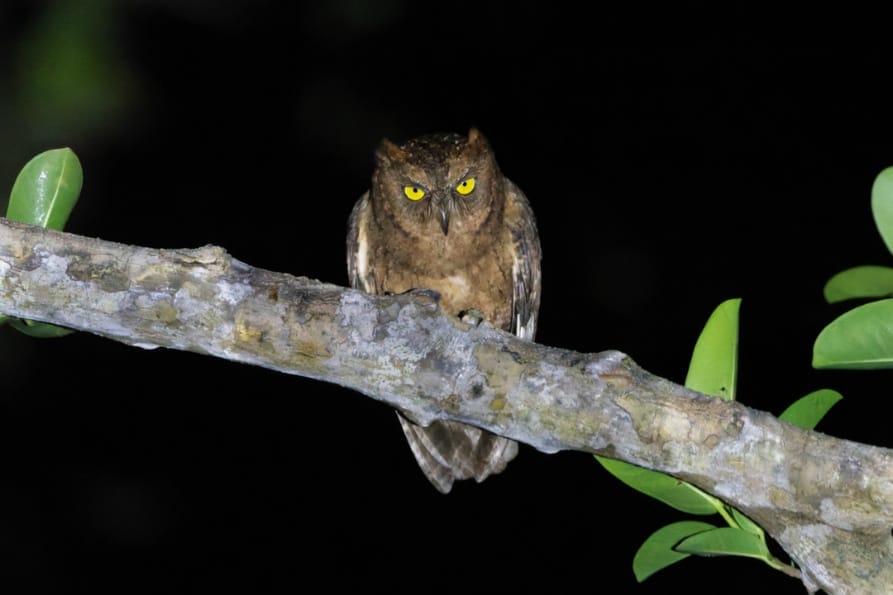By Enrico Legaspi
Last April 6, Angie Macunan, Cecil Morella, Diuvs De Jesus, Neil Serle, Nikdye Realubit, and I conducted an exploratory trip to Calayan Island off the northernmost point of mainland Luzon, the one and only home of the Calayan Rail, which was discovered by fellow WBCP member Dr. Carmela Española in 2004. The six of us are grateful to the club for partially sponsoring our trip through the Honey Lu Fund.
Day 1 (April 6)
Calayan is only accessible through chartered flights and by sea. For the latter, there are two options to choose from: via lampitaw (small cargo boat) from Claveria or via ferry from Aparri. Diuvs and I took the earliest flight from Manila to meet the Angie, Cecil, Neil, and Nikdye, who had all arrived the day before. The six of us met with Ilocos-based WBCP member Richard Ruiz, who graciously toured us around some of his favorite spots to show us some birds that are only easily seen in his corner of the Philippines, such as the Japanese Yellow Bunting. After saying our goodbyes to Richard, we made our way to Aparri, where we spent the night.

Day 2 (April 7)
We woke up early the next day and headed to the port to catch the ferry. We decided to book seats on the upper deck for a chance to see pelagic birds on the way to Calayan, but it turned out to be an uneventful five-hour journey. We dropped off our luggage at AC Homestay and had a surprise White-bellied Sea-Eagle soaring overhead! We headed to lunch at Eat-o-clock, which we later found out was owned by the barangay captain. Over our lunch of fish and more fish, Jonald, our guide for this trip, broke the news none of us were prepared for: the hike to see the rail would be SIX HOURS LONG! We scrambled to make a plan for the next day, weighing all the options available and trying our best to figure out a way to avoid the long hike. In the end, we decided we would turn back as soon as we saw our target on the trail, but we prepared for an overnight in the forest just in case we were out of luck. We then headed to Sibang Cove, the most popular tourist destination of Calayan Island. We were joined by Dutch birder Michaël Dagnelie, who had already been on the island for a number of days.

We were greeted by a loud Brown-eared Bulbul at the entrance to the cove. For those of you who aren’t willing to do the hike for the rail, the view from Nagudungan Hill alone was worth the trip to Calayan, and it stands as one of my favorite spots in the country!! A local even told us that a humpback whale was spotted from the lighthouse just an hour before! Although no whale appeared (despite our wishful scanning), a Lesser Frigatebird flew in from the horizon and added to this amazing experience.

Day 3 (April 8)
After an early breakfast at Kap’s place (who also prepared our packed lunch), we made our way to Brgy. Magsidel, where we set off on our trek. The trail begins with two steep assaults but levels off right after, with a few slight uphill climbs at certain sections. The hike isn’t too technical and includes an extensive stretch of flat, even ground, but it was looooong. We would periodically stop at stations identified in the annual surveys conducted by Isla Biodiversity Conservation (ISLA), but the deafening blaring of cicadas drowned out all other sounds from the forest. At one of our stops, Diuvs was able to make out the call of a Whistling Green-Pigeon and quickly spotted it.

A few hours into the hike, Jonald motioned for us to stop and pointed ahead at the trail. We immediately knew that this was what we had hiked all this way for and frantically scrambled for our bins to get clear views of the Piding (local name for the Calayan Rail.) It was only a brief moment, but Diuvs and Nikdye were able to get clear views of the red-orange beak and legs, while the rest of us were only able to catch a glimpse of its body as it scurried away into the tangle of the forest. Unsatisfied with our views we made our way to the house Romy, a forest warden familiar with the rails in the sanctuary found in the center of Longog forest. After settling down and eating a well-deserved lunch, we headed out again in search of the Piding. Despite our efforts and Jonald’s assurance of “guaranteed” views, we never spotted the rail again. In thinking that we “earned” the right to see it after hiking all this way, we forgot one of the key tenets of birding: there are no guarantees.

We started dinner that night disappointed and defeated. There was a very real chance that we wouldn’t see the rail at all before our hike back down. But as dinner started cooking and as we began winding down for the night, we put these worries aside, at least until the next morning. The nine of us shared a simple delicious dinner of sardines, rice, and noodles around an outdoor “dining table” illuminated by nothing but the campfire, the stars, and Romy’s blinding spotlight pointed directly at us. We talked for hours by the table that night about everything and anything, and our kwentuhan (story telling) extended even further into the night as we lay down on our mats, eventually falling asleep one by one as the exhaustion from the day caught up with us.

Day 4 (April 9)
The next morning was uneventful in the worst way possible. We returned to both sites as early as daybreak with no luck. The hike back down was much shorter (5 hours vs. the initial 7 plus hours), partly because it was mostly downhill and partly because we were so frustrated that we didn’t even try looking for other birds over the continuing shrieking of the cicadas. When we got back to the start of the trail, Maria, the wife of ISLA team leader Jam Reyno, greeted us with a warm smile and much-needed ice-cold water. She even called for some island-made ice cream for us! We cooled off and headed to town, making it back just in time for lunch—and just in time for the locals to tell us that there were no rides back to the mainland the next day. Even worse, later in the day, we were told that all boats were cancelled until further notice due to strong winds and unfavorable sea conditions. For such bad news, we were in surprisingly good spirits, and we immediately made plans to try one last time for the rail the next day, this time with expectations set low. After some beers back at our homestay, we retired for the night.
Day 5 (April 10)
At around 8 am we started our hike at Cabudadan, where the rail had been seen (although less reliably) in a previous survey. Sadly, the forest was heavily disturbed, with lots of clearings nearby and even some mid-morning videoke being heard from the trail. We decided to turn back after checking a few stations where the Piding were seen before, as it seemed unlikely that we would see them at all. Our consolation for this morning’s failed attempt was a tree full of Purple-throated Sunbirds that gave us some great looks!

After one last meal at Kap’s place, we decided to get some Wi-Fi at Isla Calayan Resort (you can tell we really like this place) as some of us needed to get some work done. I decided to head up to the lighthouse one last time to enjoy the view, and I was joined by Michaël (who had just biked from the other side of the island) and Diuvs. We explored the other side of the hill that we weren’t able to go to on our first day on Calayan, and sat down to watch the sunset—a beautiful scene even if it was partially hidden behind some clouds.

On the way back, we asked our trike drivers to stop for a bit so that we could do some owling at a spot Michaël saw some owls a few days prior. Almost immediately after shutting off our lights, a Ryuku Scops-Owls started calling from a nearby tree! We were able to get great views and passable grainy images before the owl flew off into the night.

That night, we celebrated with some Red Horse/San Mig Apple/San Mig Lights (guess who got which) and another round of kwentuhan, this time joined by Michaël who shared his bikepacking adventures.

Day 6 (April 11)
A bright sunny morning awaited us the next day, and we headed to the port after grabbing breakfast and doing some last-minute packing. Smooth seas and clear skies greeted us as we boarded the cramped lampitaw. There was a stark difference between this and the ferry we took on the way to Calayan, with the latter looking much safer and way more comfortable. But a boat is a boat, and it was better than spending another couple of days stranded on the island. Of course, this Calayan adventure had one more surprise for us, and the calm seas around the island transitioned to rough waves and choppy waters, drenching us and causing a few of us to lose our breakfast to the sea. We landed in Claveria a few hours later and boarded the overnight bus for Manila, and 12 hours later, we were back home!
For those adventurous enough to go, here are our recommendations:
- Go in June to avoid the cicadas; ISLA also conducts their surveys in June and you may be able to join them.
- Plan to stay overnight and spend a full day at the sanctuary to maximize your chances of seeing the Calayan Rail.
- Make sure you can afford one or two extra days off just in case you get stranded.
- Enjoy the views! Calayan is a beautiful island, and you should spend some time doing Sibang Cove and Nagudungan Hill if you can.
